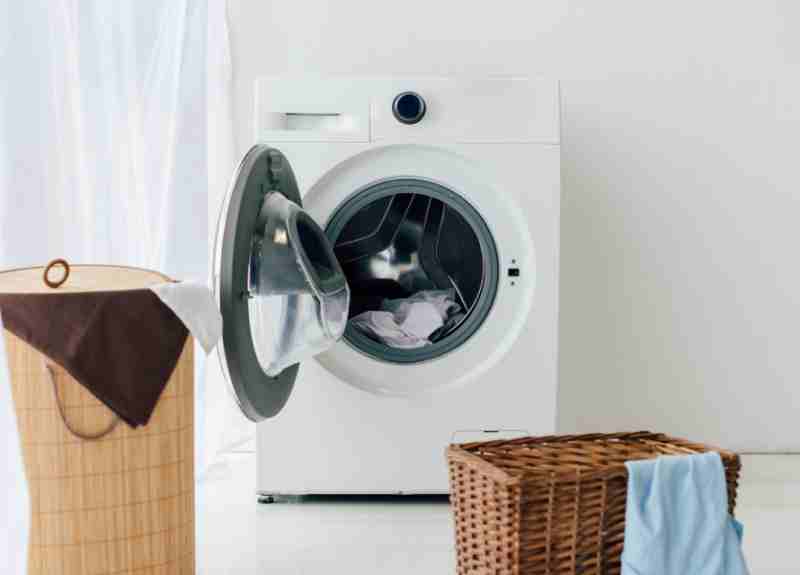Technology
Understanding Washing Machine Parts: A Complete Guide to Components and Functions

Understanding Washing Machine Parts: A Complete Guide to Components and Functions
Washing machines have become an essential appliance in households worldwide. They simplify the laundry process, making it more efficient and less time-consuming. However, to fully understand how a washing machine operates, it is crucial to learn about its various components and their functions. This guide provides an in-depth overview of washing machine parts, helping users comprehend the mechanics behind their laundry machines.
According to a Washing Machine Parts Market report, the industry is expected to grow significantly in the coming years.
1. Outer Components
a. Cabinet and FrameThe cabinet houses all internal components and provides structural support to the washing machine. It is typically made of metal or durable plastic and serves as a protective layer against external elements.
b. Lid or DoorDepending on whether it is a top-loading or front-loading machine, the washing machine will have a lid or door. This component ensures that water remains inside during operation and acts as a safety mechanism.
c. Control PanelThe control panel includes buttons, dials, and digital interfaces that allow users to select wash cycles, water temperature, spin speeds, and other settings. Advanced models may feature touchscreens and smart technology integration.
2. Internal Mechanical Components
a. Drum or TubThe drum is where clothes are placed for washing. In front-load machines, it rotates horizontally, while in top-load machines, it moves vertically. It is typically made of stainless steel or plastic to resist rust and withstand high-speed rotations.
b. Agitator or PulsatorIn top-load washing machines, an agitator is a central post that moves back and forth to create turbulence in the water, effectively cleaning clothes. Some machines use a pulsator, which generates water currents instead of direct movement.
c. MotorThe motor is the powerhouse of the washing machine. It provides the necessary motion for the drum or agitator. Some machines use direct drive motors, eliminating the need for belts and pulleys, making them more energy-efficient and quieter.
d. Belt and Pulley SystemFor washing machines that do not have direct drive motors, a belt and pulley system transfers motion from the motor to the drum or agitator, ensuring efficient operation.
3. Water System Components
a. Water Inlet ValveThe water inlet valve controls the flow of water into the machine. It opens and closes based on the user’s settings, allowing hot or cold water to enter the drum.
b. Hoses and PipesWashing machines have inlet hoses that bring water from the supply and drain hoses that expel used water. These hoses must be checked regularly for leaks or blockages.
c. Detergent DispenserThe detergent dispenser compartment allows users to add detergent, fabric softener, and bleach. The washing machine releases these substances at appropriate times during the wash cycle.
d. Drain PumpThe drain pump expels used water from the machine after the wash cycle. It ensures the removal of excess water before spinning and drying.
4. Electrical and Safety Components
a. Timer and SensorsTimers control the duration of each wash cycle. Advanced washing machines are equipped with sensors that monitor water levels, temperature, load weight, and detergent concentration to optimize performance.
b. Lid Switch or Door LockThis component prevents the washing machine from operating when the lid or door is open, ensuring user safety. Front-load washers have an automatic locking mechanism to prevent opening mid-cycle.
c. Circuit BoardThe circuit board acts as the brain of modern washing machines. It processes user inputs and controls various machine functions such as temperature regulation, motor speed, and cycle settings.
d. Heating ElementSome washing machines include a heating element to regulate water temperature, improving the effectiveness of detergents and ensuring better stain removal.
5. Spin and Drying System Components
a. Spin BasketThe spin basket is the perforated inner drum that holds clothes and allows water to drain out during the spin cycle. It rotates at high speeds to extract water from garments, reducing drying time.
b. Suspension SystemThe suspension system includes shock absorbers, springs, and dampers that reduce vibrations and noise, ensuring smooth operation even during high-speed spinning.
c. Balance RingThis component helps maintain stability by distributing weight evenly inside the drum. It prevents excessive shaking and prolongs the machine’s lifespan.
6. Filtration and Maintenance Components
a. Lint FilterThe lint filter collects fabric lint and debris from the washing cycle, preventing blockages in the drainage system.
b. Drain TrapSome washing machines have a drain trap to catch foreign objects like coins and hairpins that could damage the pump or clog the drain.
c. Air VentsIn models with a drying function, air vents allow proper airflow, enhancing the drying process and preventing mold formation.
7. Common Issues and Troubleshooting Tips
Understanding washing machine components can help diagnose common issues:
- Washing machine not starting: Check the power supply, circuit board, and lid switch.
- Water not filling the drum: Inspect the water inlet valve and hoses for blockages.
- Excessive noise or vibration: Examine the suspension system, balance ring, and drum alignment.
- Drum not spinning: Verify the motor, belt, and pulley system for damage.
- Water not draining: Check the drain pump and hoses for clogs.
Conclusion
A washing machine is a complex appliance made up of various interconnected components. Each part plays a vital role in ensuring smooth operation and effective cleaning. By understanding these components and their functions, users can better maintain their machines, troubleshoot common issues, and make informed decisions when purchasing a new washer. Proper care and regular maintenance can significantly extend the life of a washing machine, ensuring efficient performance for years to come.
Source:
Click for the: Full Story
You might like













 Close Menu
Close Menu